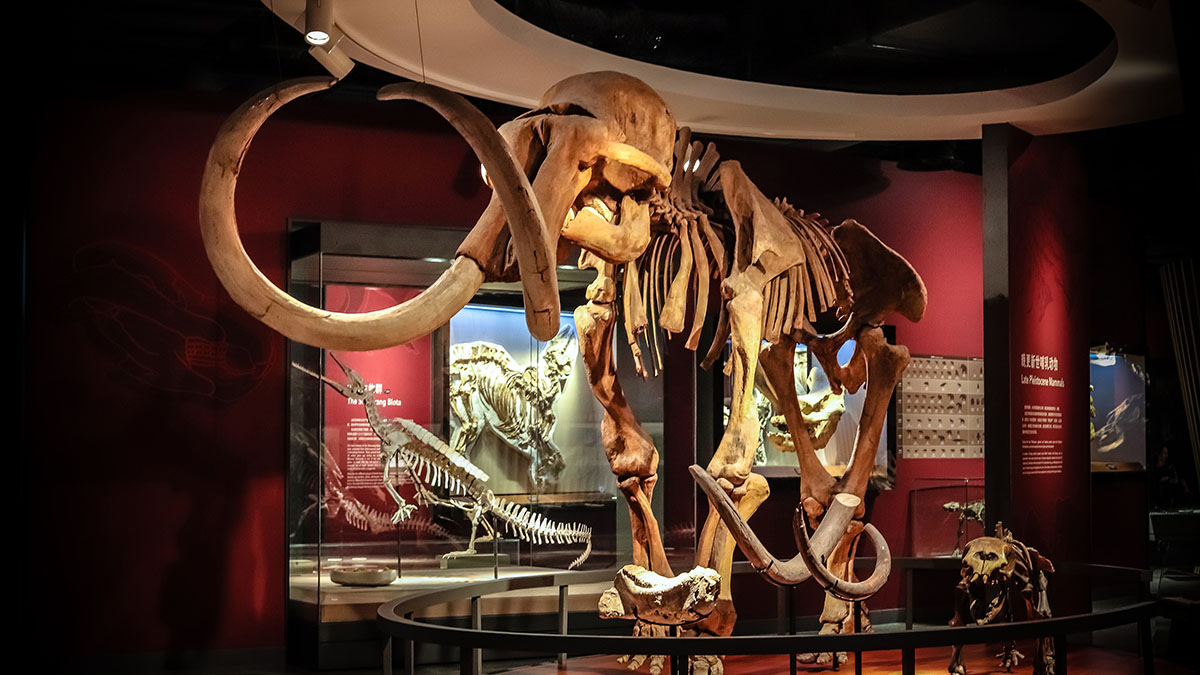can we really bring extinct species back to life? and is it a good idea?

For five million years, mammoths roamed the Earth. While we used to be taught that humans hunted them down to extinction, the reality is that climate change wiped out their main source of food and the giant animals couldn’t adapt quickly enough. On the other hand, the thylacine, the marsupial predator that roamed Tasmania for two million years, was most likely our victim. Since they kept threatening sheep, we kept shooting them until a farmer in 1930 killed the last wild thylacine known to science. And oddly, both animals may one day return from the dead.
Now, that idea comes with numerous caveats because it’s based on using the creatures’ DNA samples, filling in missing genetic data, engineering an embryo, then hoping a similar modern animal can gestate it to term. In mammoths’ case, you would use an Asian elephant. For new Tasmanian tigers, tiny carnivores called dunnarts could serve as a bridge between embryo and an artificial pouch in which a joey would be nursed until it’s strong enough to be autonomous. Both of these wildly complicated experiments come with extremely high risks of failure.
If that sounds very Jurassic Park, it is. The only real difference is that dinosaur genes preserved in amber have a half-life of roughly 1.5 million years, DNA from mammoths is only thousands of years old by comparison, and thylacine samples were collected barely a century ago. If we really wanted to hatch a viable velociraptor, no amount of frog genes would suffice and we’d have to resort to reverse-engineering birds. But if we wanted a fairly complete genome for a thylacine or a wooly mammoth, well, we more or less have them in hand.
why a private company is trying to play god
Hold on a minute, you may ask, why would a private company called Colossal possibly want to take on such complex and difficult feats? Primarily because it wants to achieve mastery over genetic engineering, which would allow it to license technology to develop the kinds of cures and treatments we only see in science fiction. Gambling on attracting interest and investment with flashy projects like resurrecting extinct species, its scientists hope to learn the secrets of the foundational blocks of life, then apply the knowledge to humans and conservation efforts.
Wouldn’t it be great if we could both save endangered species and cure aggressive cancers in an afternoon? That ability is effectively Colossal’s goal, and even if there are no thylacines roaming the wild by 2075, maybe there are breakthroughs we could use to fix challenges over the next few decades. Of course, this is still a very optimistic view. Biology is difficult and has many mechanisms that resist manipulation. In fact, some critics charge that Colossal took on the thylacine project because its infamous mammoth resurrection effort was stalled.
In even the best-preserved mammoth tissue samples there are still too many genetic holes and scientists aren’t sure splicing in elephant DNA can fix because at best, we’d end up with a rough approximation of a mammoth genome, and the odds that the resulting embryo would be viable are unknown. Thylacine genes are much more recent, and hopefully have fewer missing pieces, giving Colossal a better chance to make headlines and secure funding by working with a species that still existed in the lifetimes of people still with us today.
is de-extinction even a good idea in the first place?
For now, let’s push past the caveats and imagine a world where in a Colossal lab, there’s a baby mammoth and a baby thylacine. Both are healthy, happy, and growing. Now what? Introducing a single animal into the wild is absurd, of course. You’d need at least a few thousand individuals for the species to have a chance to survive again, and with a very limited sample pool, there will be an extremely high risk of inbreeding that could easily wipe out the species again. And just as importantly, there’s a question of exactly how well an extinct animal would fare today.
While Colossal says that it selected animals that will benefit today’s ecosystems, zoologists are fairly skeptical. The last mammoth died 4,000 years ago, but their numbers had been dwindling for hundreds of thousands of years. In the 90 or so years the thylacine has been gone, dingoes, foxes, and other predators filled the same niches and are probably not going to give them up without a vicious turf war. It may make us feel warm and fuzzy to think that we could one day atone for our sins and bring back species we killed off, but nature seldom shows any mercy.
Even if we did have the technology, could artificially create sustainable genetic diversity, raise at least 5,000 individuals from an extinct species, and introduce them back into the wild, it’s almost certain that we’d be disrupting ecological niches with what will amount to an invasive pest. As cruel as it sounds, it seems that once a species is gone for several generations, it’s gone for good as far as nature is concerned. Maybe we should keep that in mind and focus on saving today’s endangered species, rather than planning on bringing them back from the dead with technology that doesn’t exist yet and may never become a reality.





